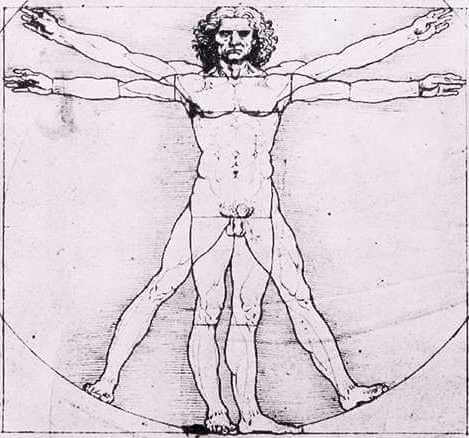Ramon Lim
Iowa City, Iowa, United States
 |
| Man as conceived by DaVinci. |
Since an early age, I have often wondered who we are (individually as well as a species) and what might be our place in the universe. I believe that the ultimate goal of science, apart from its utilitarian role, is to help us gain insight into what life is about—life, not only physically, biologically, and socially, but also existentially. While I grappled with this issue, I realized that scientific research alone does not help and that only by combining it with philosophical contemplation can a holistic view of life emerge.
Although I have had this idea most of my life, my busy academic schedule did not permit me to pursue it. After retiring I began working on the book Self and the Phenomenon of Life (published in 2017), which took three strenuous years to finish. I reached the conclusion that most of the concerns of humanity, life and death, goodness and evil, war and peace, determinism and free will, can be explained in simple biological terms, under the unified notion of “self,” defined here as a natural system that seeks its own perpetuation. As my definition of self does not entail consciousness, the term is applicable to all forms of life, even the simplest when they first appeared on Earth. From this puny initial life, I show how self is constructed and expressed at every stage of evolution.
The book has fifteen chapters. Chapter 4 discusses how “self” manifests as simple survival instincts in unicellular organisms, such as bacterial defense against invading viruses, and the engulfing of edible particles by an amoeba. I point out in Chapter 5 that plants, usually mistakenly viewed as passive and indolent, also express a self in the form of defense and communication in times of health and disease. Chapter 6 discusses how, in animals, immunity distinguishes “self” from “non-self” by strictly molecular recognition, and why the body rejects other people’s organs when transplanted into it. Chapter 7 outlines how the nervous system gradually evolves to bring self to the conscious level and express it in the great varieties of animal behavior. Chapters 8 to 11 cover some of the important functions of the mind, and show how they are related to self–in the latter’s enhancement, awareness, and expression. Consciousness (Chapter 8) polarizes self from the rest of the world, and makes “I” stand out from a crowd. Emotion (Chapter 9) provides the driving force for an animal to act for the good of self. Memory (Chapter 10) provides a sense of continuity to self (the biographical self) and shapes future actions according to past experience. Free will (Chapter 11) strengthens the awareness of self by giving it a sense of agency, and enables an animal to make appropriate choices suitable for its own preservation.
Chapter 12 places self in a social context, and shows how a group of individuals, when interactive and properly coordinated, can be considered as an expanded self, or a mega-self. In forming a human society, social cohesion conflicts with individual freedom, and a compromise constantly needs to be made. A society can last as long as its members receive more than what they have to sacrifice. Humans have an inborn social conscience shaped by thousands, perhaps millions, of years of relentless group selective pressure in the course of evolution. Thus, in a successful society most members are moral—that is, pro-social—by definition, otherwise the society would have collapsed and perished.
While internal cohesion promotes the strength of a mega-self, it also leads to outward hostility. Competition among mega-selves is a form of group selection, in which stronger groups are more likely to win. Starting from the hunter-gatherers, over 90% of human groups engaged in battle in one form or another, usually for access to limited resources. Thus, human nature can be at once good and bad depending on the vantage point—inside or outside a group. War will never end until all of humanity becomes a single mega-self.
In Chapters 13 and 14, I take a conceptual jump from the observable (the subject matter of science) to the introspective and transcendental (the subject matter of philosophy). This audacious leap may seem illogical. However, once we realize that such deep human concerns as life-and-death, existence-and-nothingness, as well as “meaning,” are all extensions of the self’s craving for its own continuation, the gap may not be as wide as it first appears. Here I discuss how existential anxiety arises from the finitude of our lives, and how religions come as its antidote. Nevertheless, religiosity does not necessarily require an omnipotent, supreme ruler of the universe. There are ways to blend our minuscule existence with the vastness and endlessness of the universe without burden of traditional dogma. This book shows that, by adapting a rigorous scientific approach and a critical philosophical thinking, we can achieve religiosity as much as, if not surpassing, what can be attained by blind faith alone. A serious scientist, said Einstein, is profoundly religious.
Further resources
Self and the Phenomenon of Life: A Biologist Examines Life from Molecules to Humanity is available on Amazon.
RAMON LIM, MD, PhD, is Professor Emeritus of Neurology at the University of Iowa.
Summer 2018 | Sections | Books & Reviews

Leave a Reply